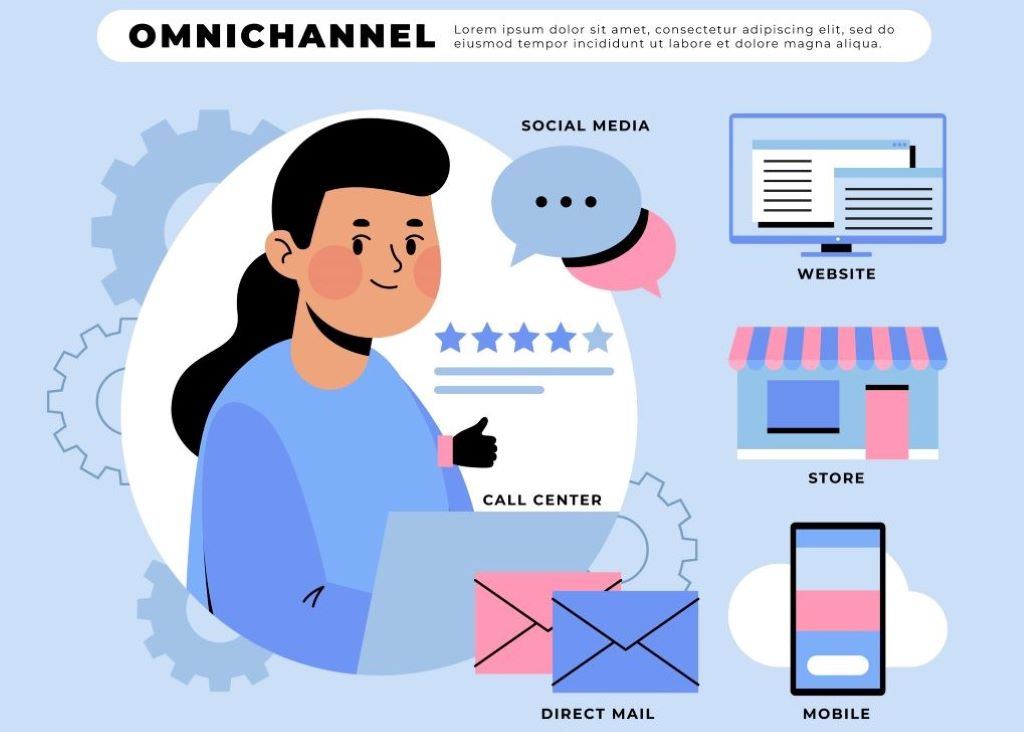
September 2022
tl;dr
- Omnichannel marketing integrates all channels into a seamless and consistent customer experience, including:
- brick-and-mortar stores
- online stores
- social media
- mobile apps
- Customers expect personalized experiences across all channels.
- It enhances customer experience, increases sales, builds brand loyalty, and provides better data insights.
- To deliver seamless customer experiences, brands should use consistent branding, personalization, mobile optimization, data integration, and customer service.
Omnichannel marketing is becoming increasingly important for brands as customers expect seamless and personalized experiences across all channels. With omnichannel marketing, brands can create a unified experience that engages customers and builds brand loyalty. In this article, we will explore the rise of omnichannel marketing and how brands can deliver seamless customer experiences.
What is Omnichannel Marketing?
Omnichannel marketing is a strategy that integrates all channels, including brick-and-mortar stores, online stores, social media, email, and mobile apps, into a seamless and consistent customer experience. The goal of omnichannel marketing is to create a unified experience that engages customers and builds brand loyalty."[1]
Why is Omnichannel Marketing Important?
Omnichannel marketing is important because customers expect seamless and personalized experiences across all channels. With omnichannel marketing, brands can deliver a consistent and relevant experience that meets the needs and preferences of customers. Here are some of the most significant benefits of omnichannel marketing:
1. Enhanced Customer Experience
Omnichannel marketing can enhance the customer experience by delivering relevant and personalized content and offers across all channels. This creates a seamless and consistent experience that engages customers and builds brand loyalty.
2. Increased Sales and Revenue
Omnichannel marketing can also increase sales and revenue by making it easier for customers to purchase products or services. By integrating all channels, brands can create a frictionless path to purchase that encourages customers to buy.
3. Improved Brand Loyalty
Omnichannel marketing can improve brand loyalty by creating a unified experience that meets the needs and preferences of customers. By delivering relevant and personalized content and offers, brands can build a strong emotional connection with customers that leads to long-term loyalty."[5]
4. Better Data Insights
Omnichannel marketing can also provide better data insights by collecting data across all channels. This allows brands to gain a comprehensive view of customer behavior and preferences, which can inform future marketing strategies and campaigns."[2]
How to Deliver Seamless Customer Experiences with Omnichannel Marketing
To deliver seamless customer experiences with omnichannel marketing, brands need to use a range of strategies and technologies. Here are some strategies that brands can use to deliver seamless customer experiences with omnichannel marketing:"[4]
1. Consistent Branding and Messaging
Brands need to ensure that their branding and messaging are consistent across all channels. This means using the same logos, fonts, and colors, and delivering a consistent message that reinforces the brand's values and mission.
2. Personalization
Personalization is critical in omnichannel marketing. Brands need to use data to deliver relevant and personalized content and offers across all channels. This creates a seamless and consistent experience that meets the needs and preferences of individual customers.
3. Mobile Optimization
Mobile optimization is essential in omnichannel marketing, as more and more customers are using mobile devices to access content and make purchases. Brands need to ensure that their websites and apps are optimized for mobile devices and deliver a seamless and consistent experience across all channels.
4. Data Integration
To deliver a seamless customer experience, brands need to integrate data across all channels. This means collecting data from brick-and-mortar stores, online stores, social media, email, and mobile apps, and using it to deliver relevant and personalized content and offers.
5. Customer Service
Customer service is critical in omnichannel marketing. Brands need to ensure that their customer service is consistent across all channels and provides a seamless and positive experience for customers. This includes using chatbots, social media, and email to provide quick and efficient customer support."[3]
Conclusion
Omnichannel marketing is becoming increasingly important for brands as customers expect seamless and personalized experiences across all channels. With omnichannel marketing, brands can create a unified experience that engages customers and builds brand loyalty. By using consistent branding and messaging, personalization, mobile optimization, data integration, and customer service, brands can deliver seamless customer experiences that meet the needs and preferences of individual customers.
References:
[1] https://www.napco.com/report/omnichannel-marketing-the-key-to-unlocking-a-powerful-customer-experience/
[2] https://business.adobe.com/blog/basics/omnichannel-marketing-guide
[3] https://business.adobe.com/blog/basics/omnichannel-marketing
[4] https://www.forbes.com/sites/forbesagencycouncil/2020/05/04/the-importance-of-omnichannel-marketing/?sh=6f14612361d7
[5] https://www.routee.net/blog/omnichannel-marketing/
Image by Freepik https://www.freepik.com/free-vector/hand-drawn-flat-design-omnichannel-infographic_25046492.htm#query=omnichannel%20marketing&position=2&from_view=keyword&track=ais
